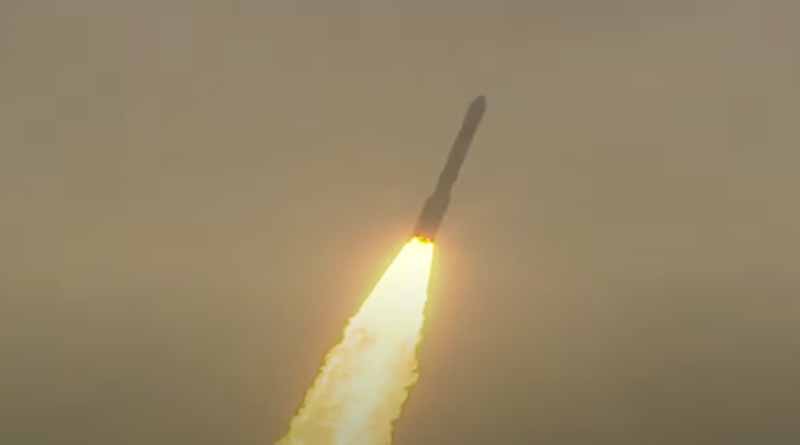ISRO’s EOS-09 launch fails due to 3rd-stage anomaly
Sriharikota (Andhra Pradesh), May 18 : The Indian Space Research Organisation (ISRO) on Sunday suffered a setback as its 101st mission, PSLV-C61 carrying the EOS-09 satellite, faced a technical malfunction in the launch vehicle.
The malfunction led to the mission failure, and the satellite could not be successfully deployed.
The indigenous PSLV, or Polar Satellite Launch Vehicle — PSLV-C61 — lifted off from the Satish Dhawan Space Centre in Sriharikota with the aim of placing EOS-09 into a Sun Synchronous Polar Orbit (SSPO).
While the first and second stages of the launch vehicle performed normally, ISRO Chairman Dr V. Narayanan said that an unexpected issue arose during the third stage, preventing the successful deployment of the satellite.
The ISRO Chief said, “Today, we attempted the 101st launch from Sriharikota, the PSLV-C61 carrying the EOS-09 mission. The PSLV is a four-stage launch vehicle, and its performance was normal up to the second stage. The third stage motor ignited perfectly; however, during its operation, an anomaly was observed, and the mission could not be completed successfully…”
“We will come back after analysis,” he further said.
ISRO also posted an update on X, stating: “Today 101st launch was attempted, PSLV-C61 performance was normal till 2nd stage. Due to an observation in 3rd stage, the mission could not be accomplished.”
The third stage of the PSLV is a solid rocket motor designed to provide high thrust during the upper atmosphere phase of the flight, delivering a maximum thrust of 240 kilonewtons. It plays a crucial role in placing the satellite into its intended orbit.
The EOS-09 was designed to provide continuous and reliable remote sensing data for operational applications across various sectors, ranging from border surveillance and national security to agriculture, forestry, flood monitoring, and disaster management. For the mission, PSLV carried a 1,710 kg satellite into a sun-synchronous orbit to ensure consistent lighting for Earth observation.
The mission was also meant to promote sustainability and carry out responsible space operations. EOS-09 was a repeat satellite similar to EOS-04, launched in 2022, that was designed with the mission objective to ensure remote sensing data for the user community engaged in operational applications and to improve the frequency of observation.









